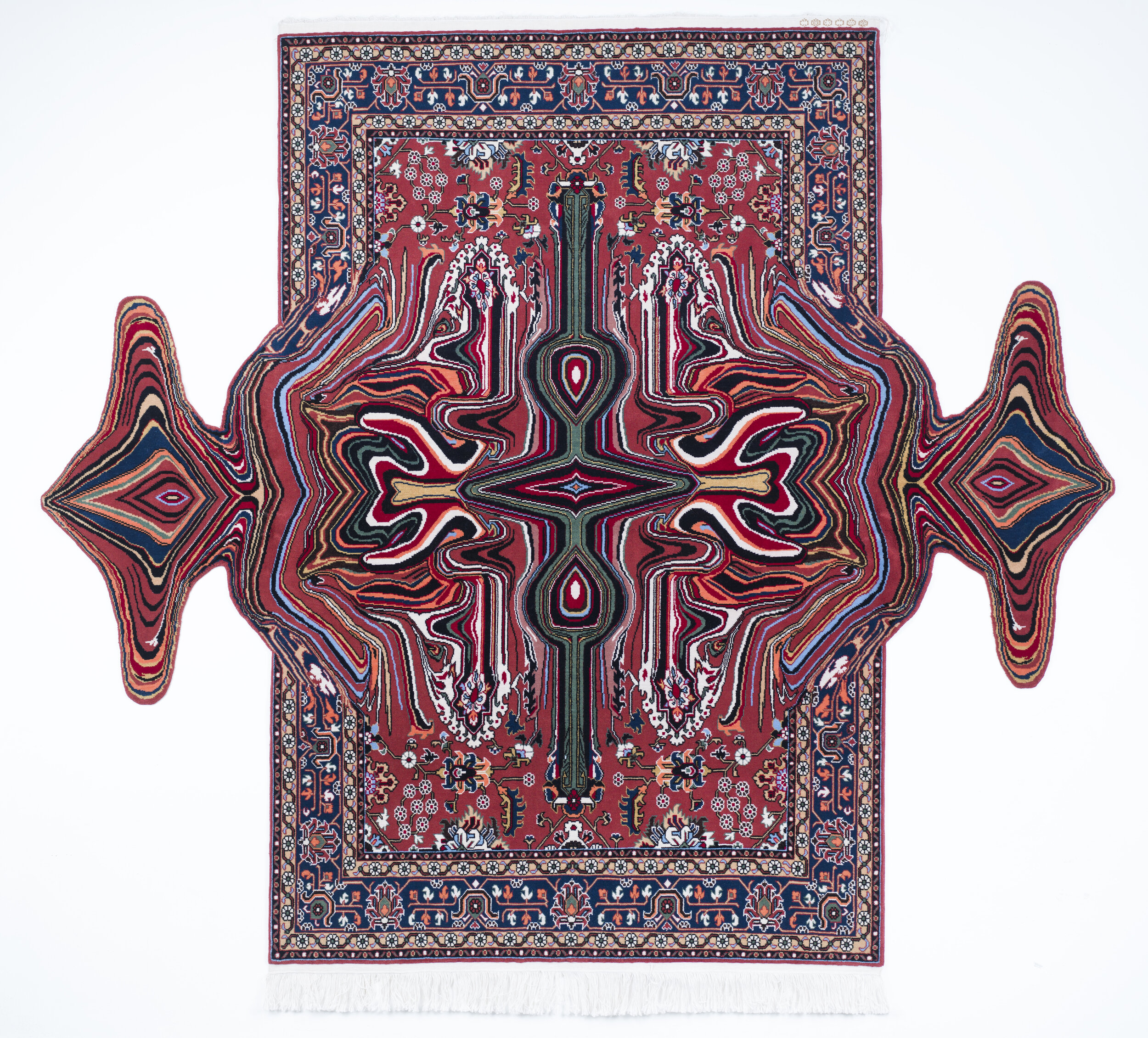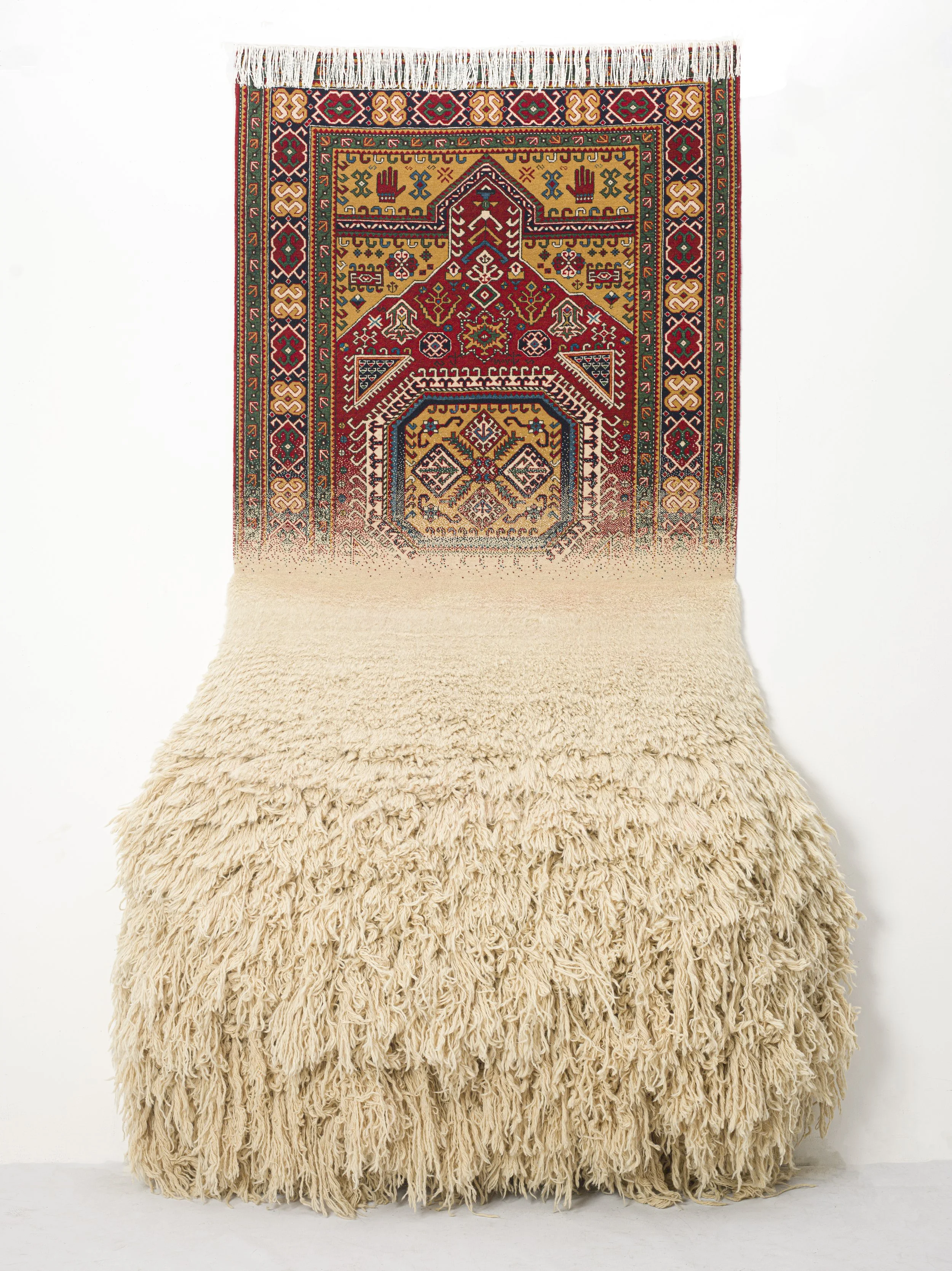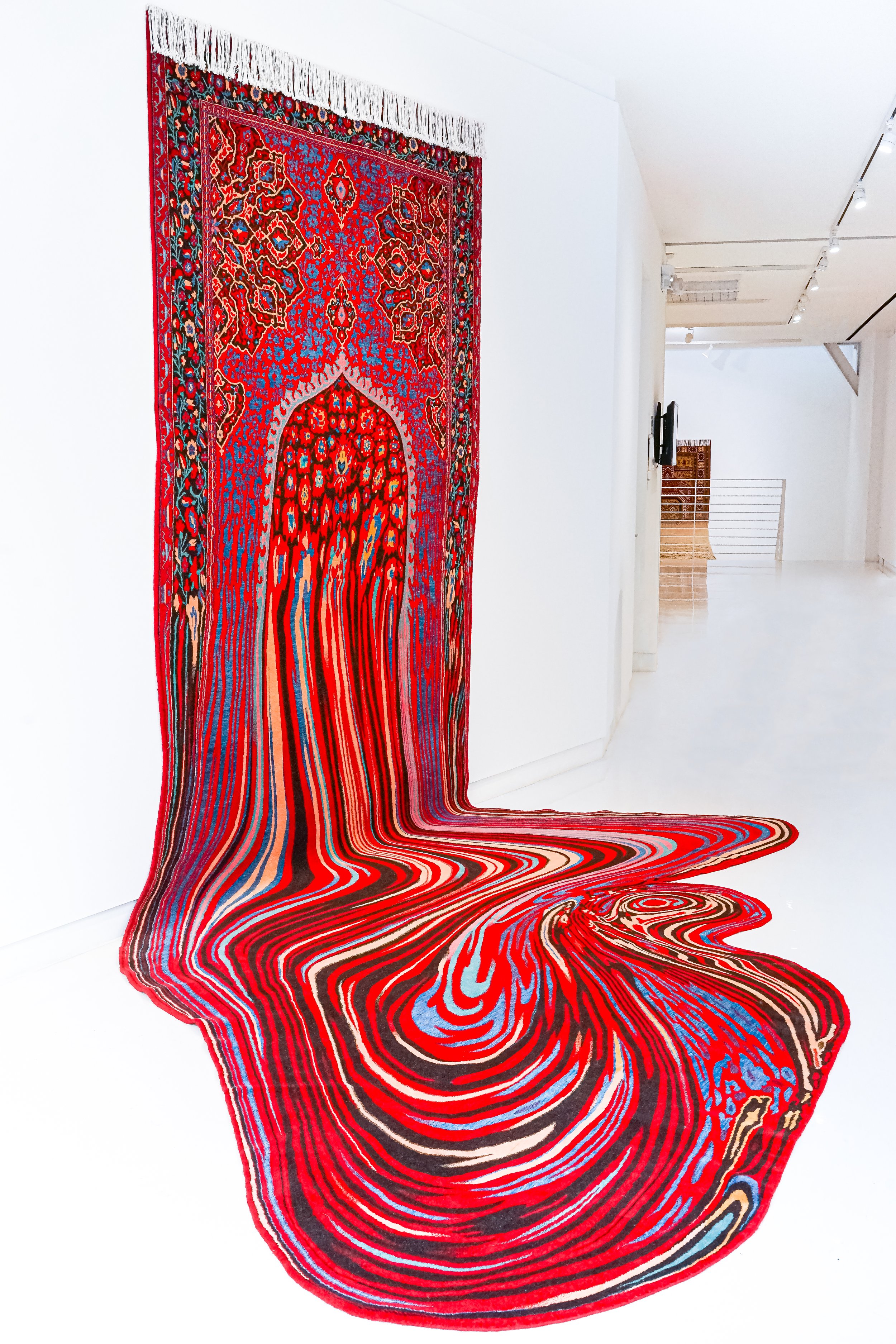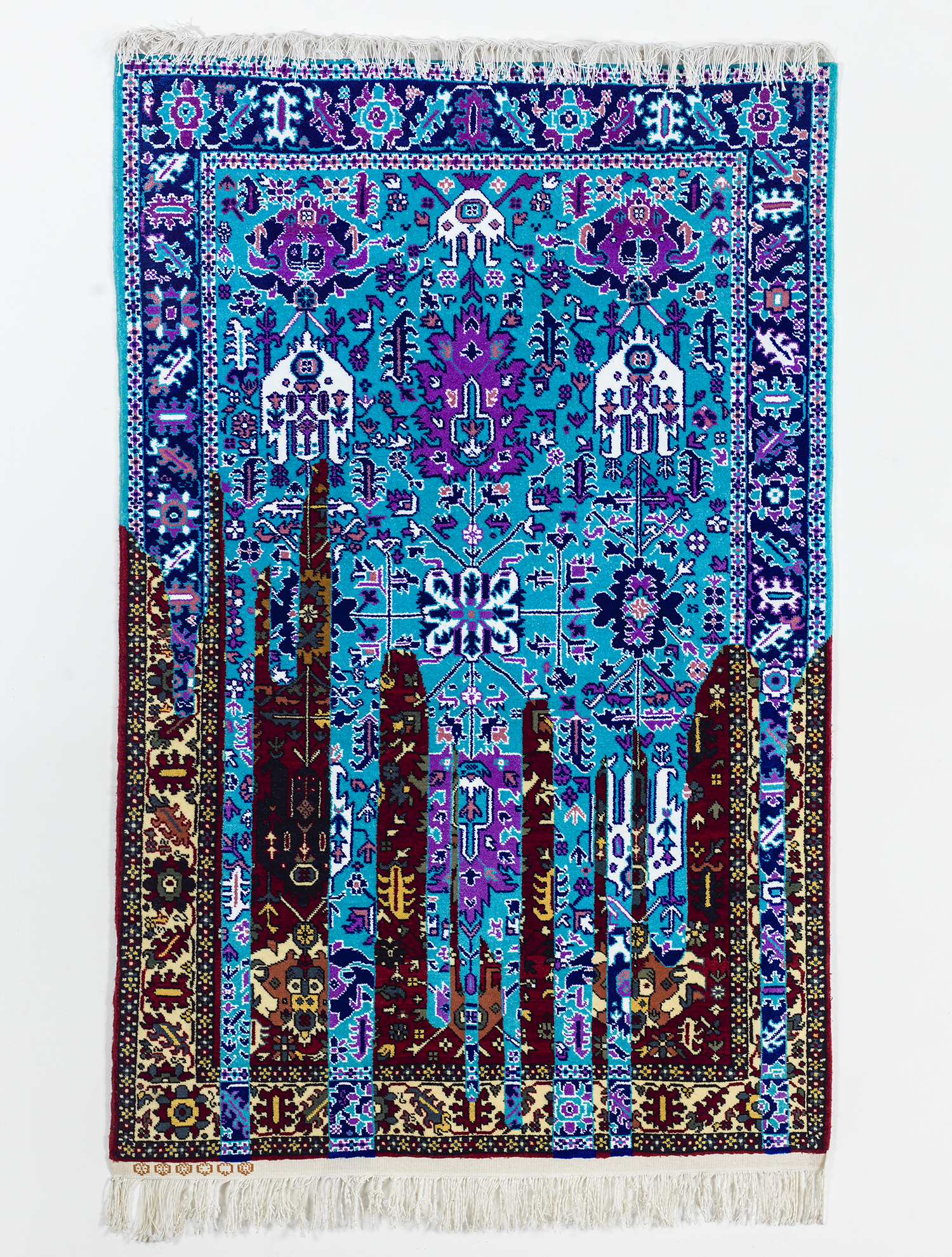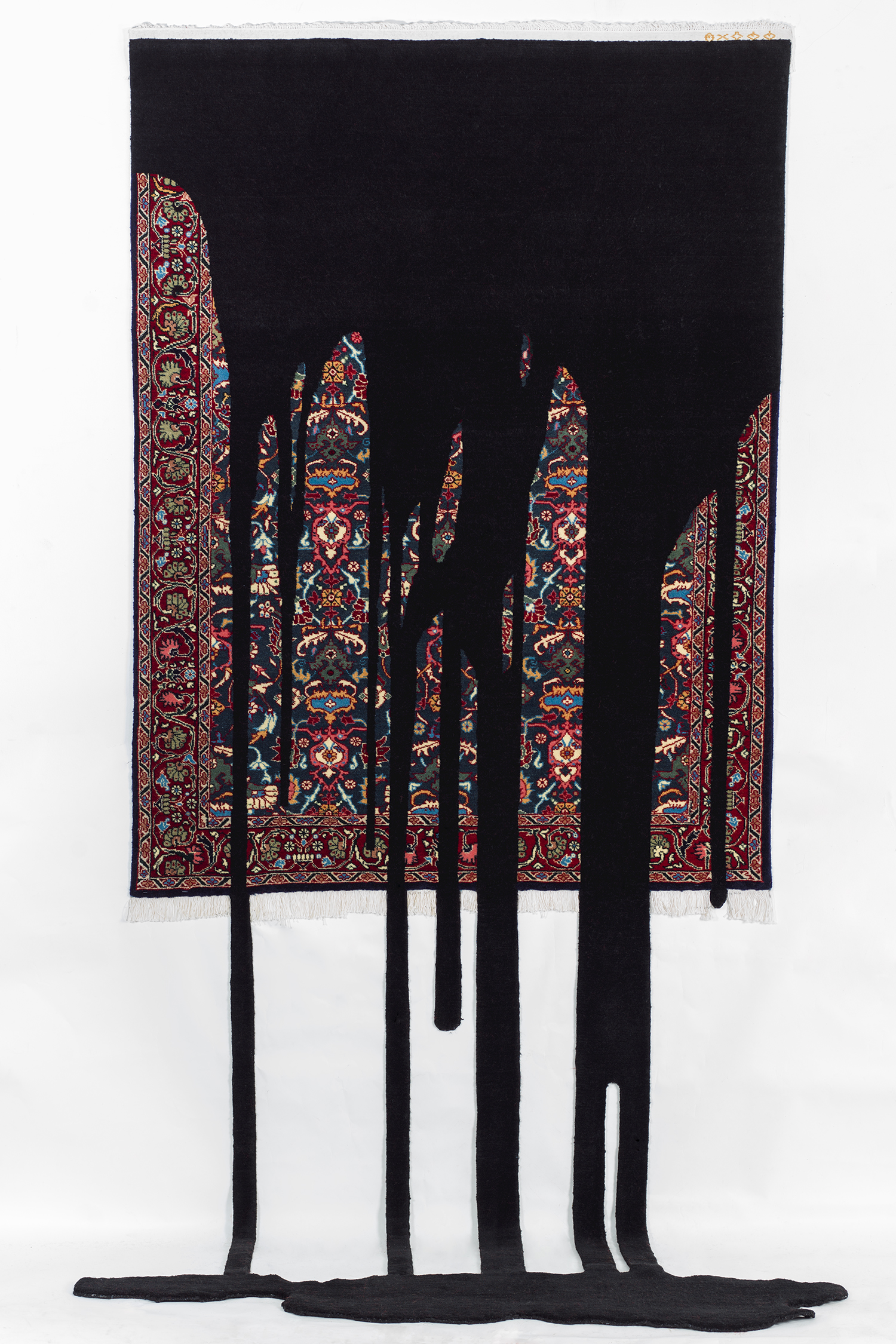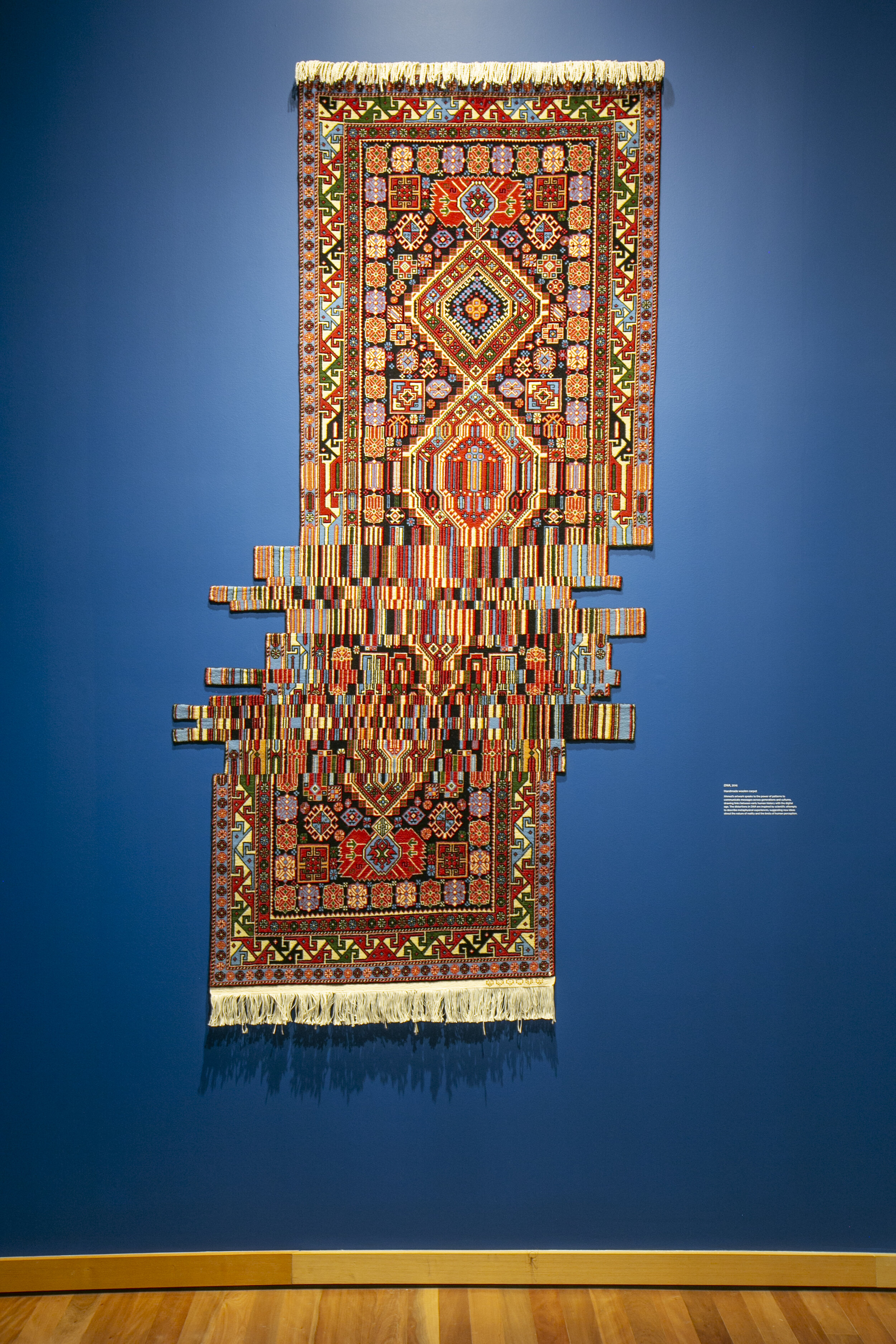
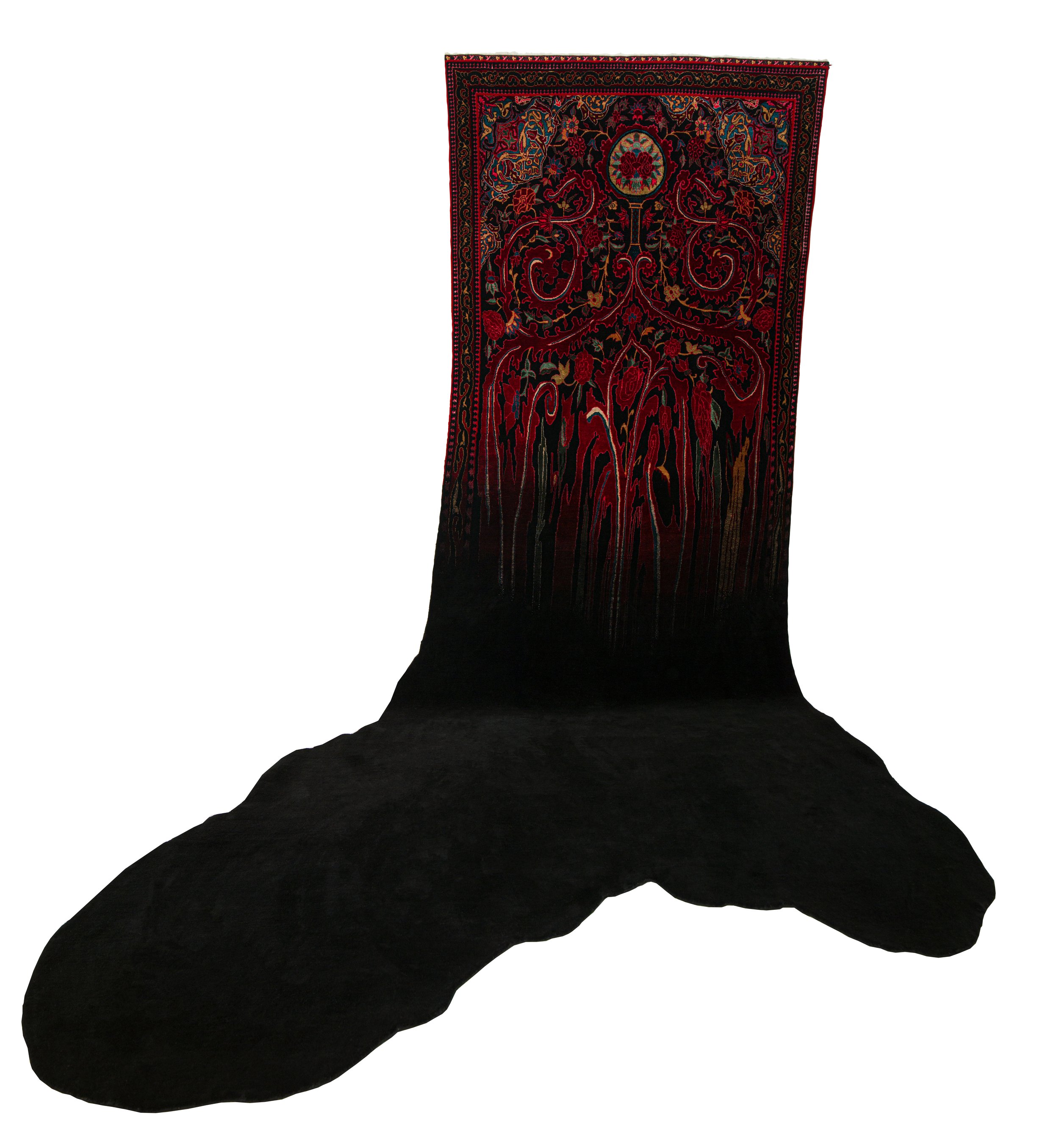
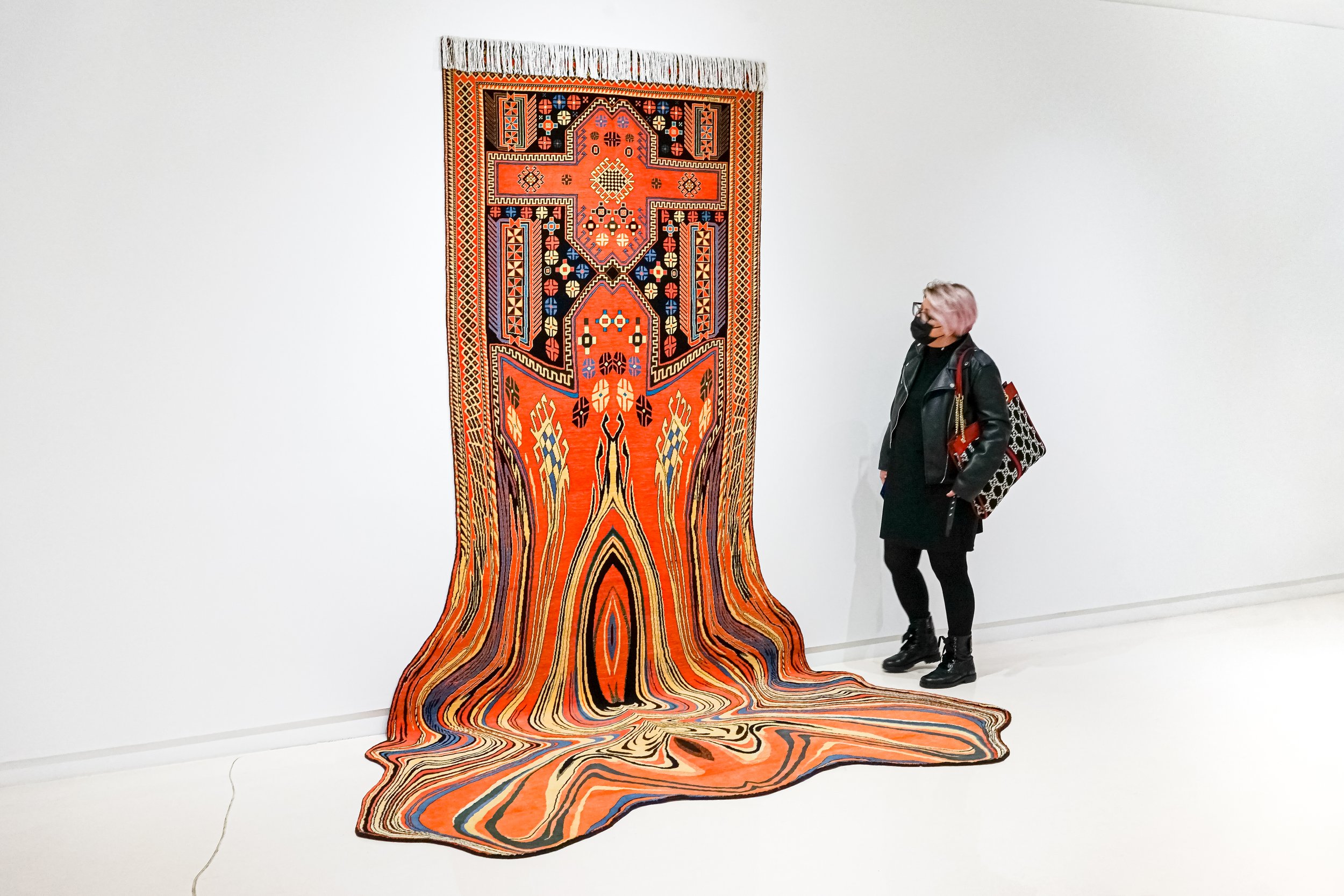
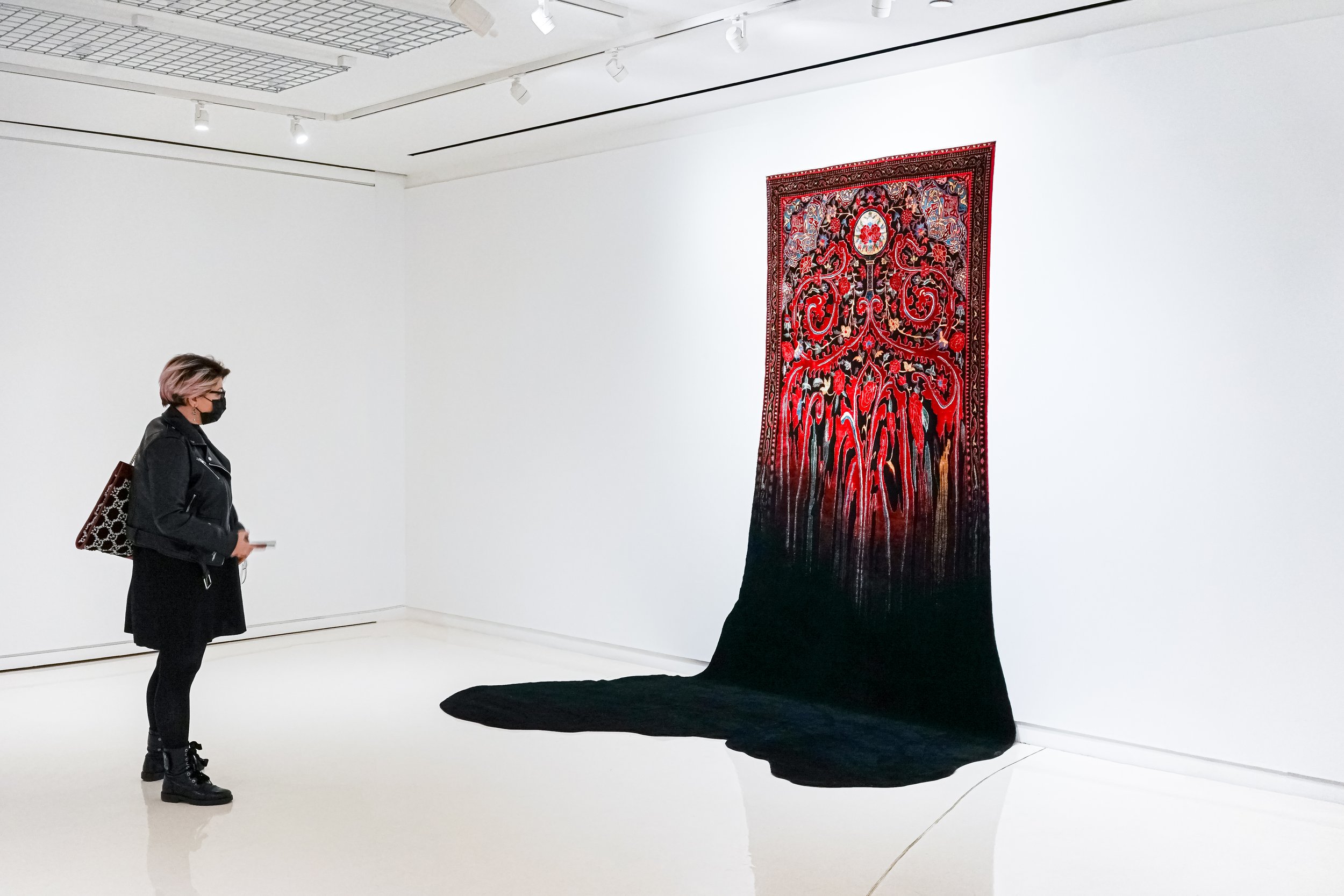
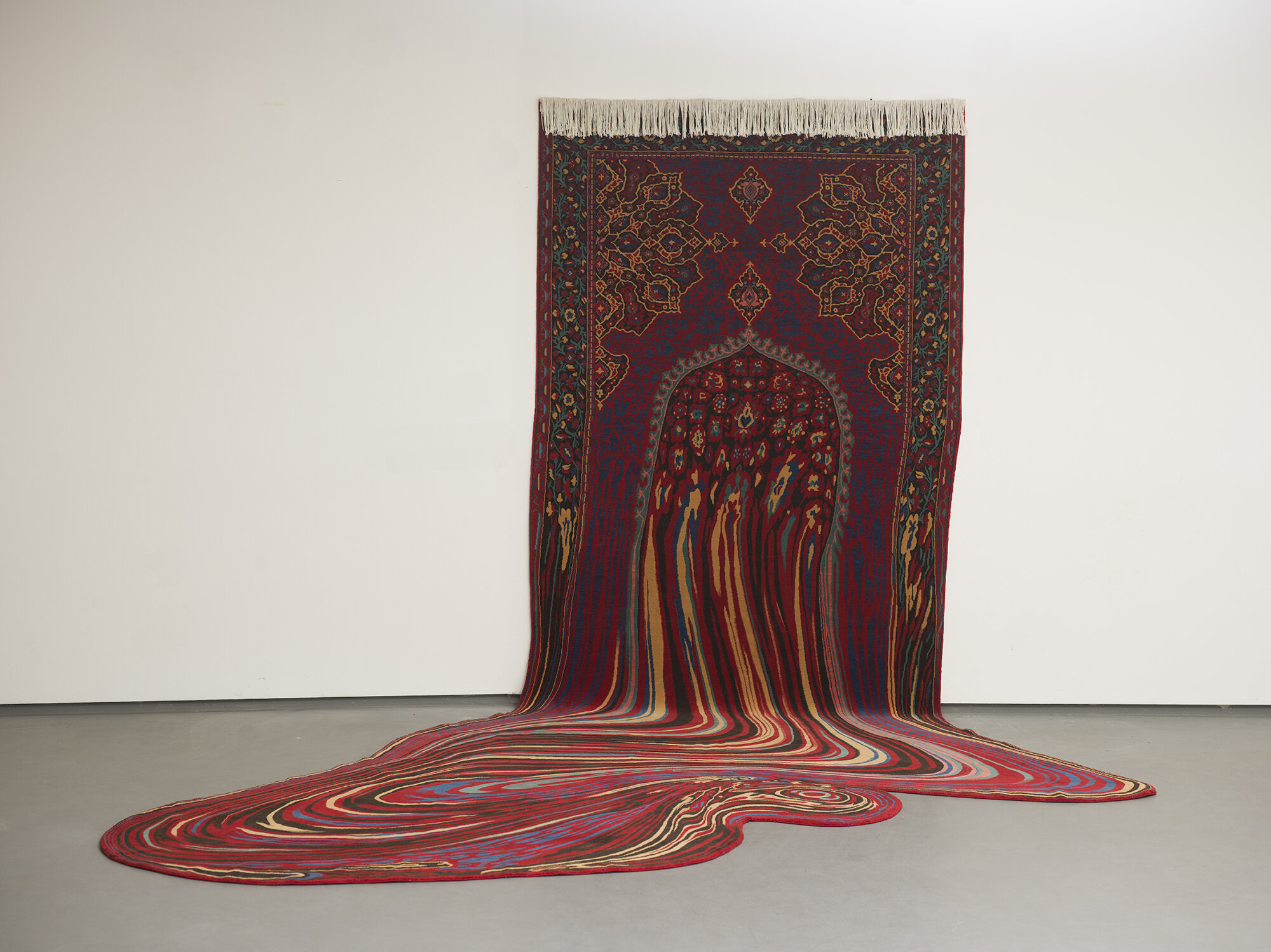
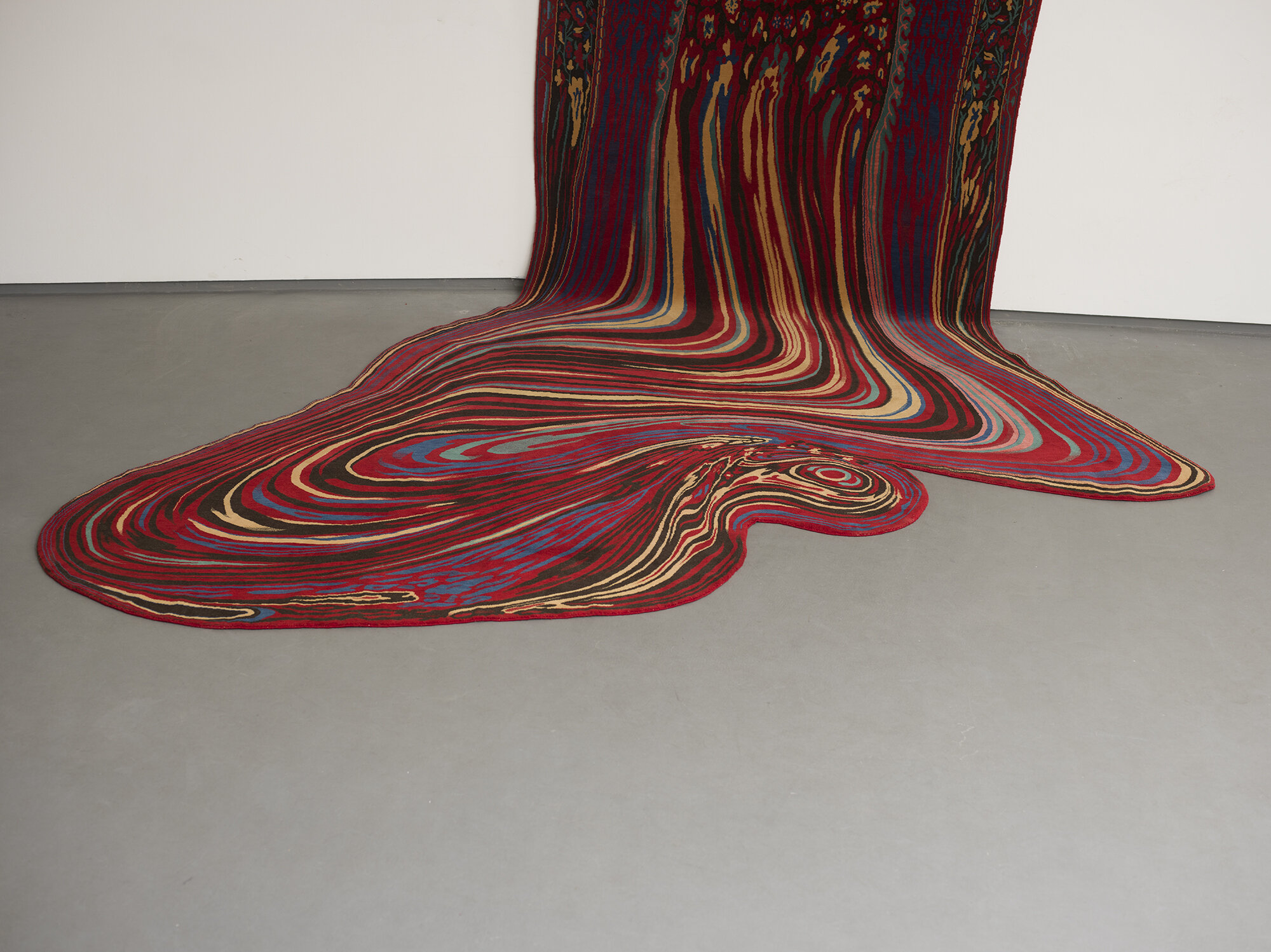


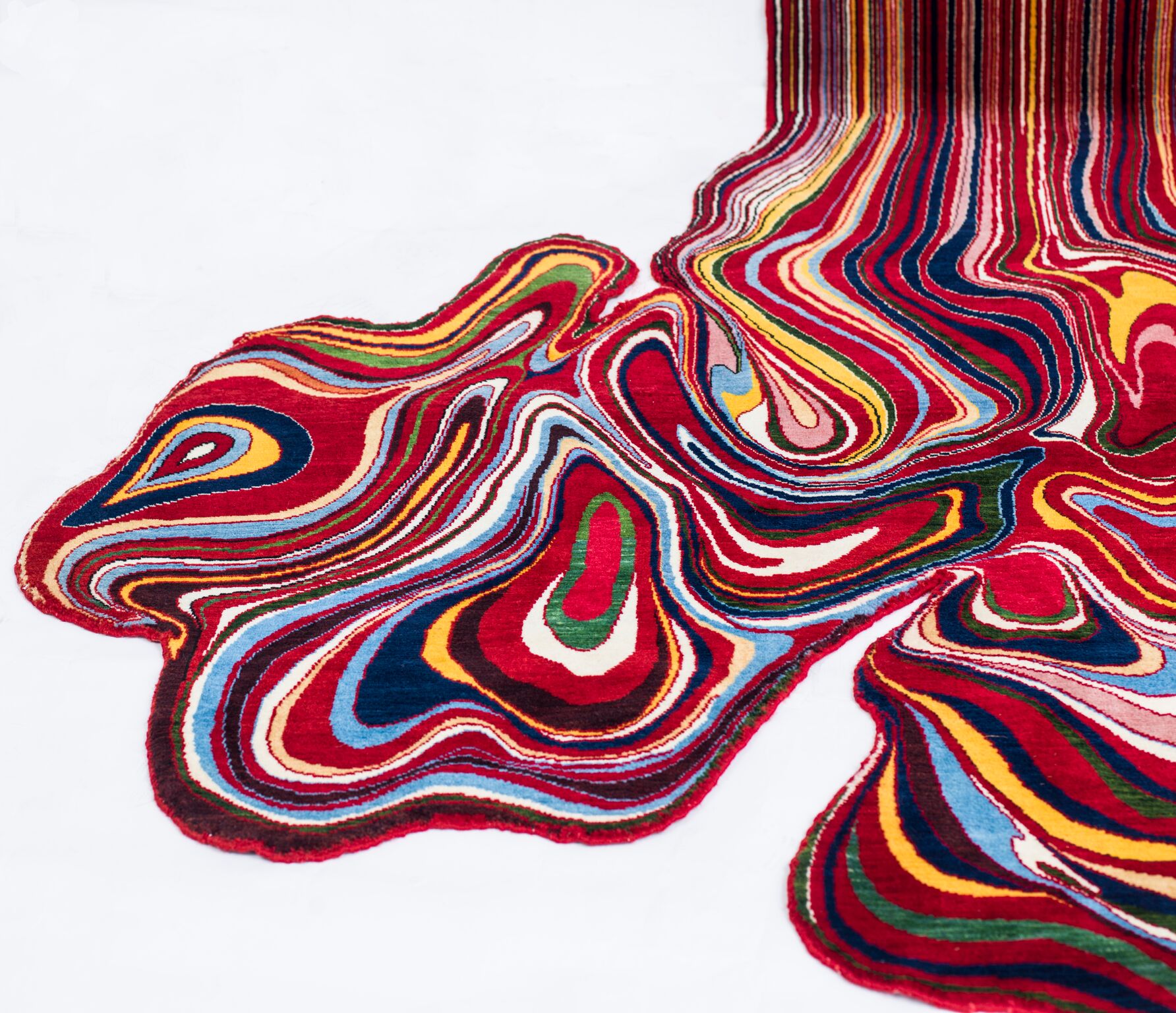


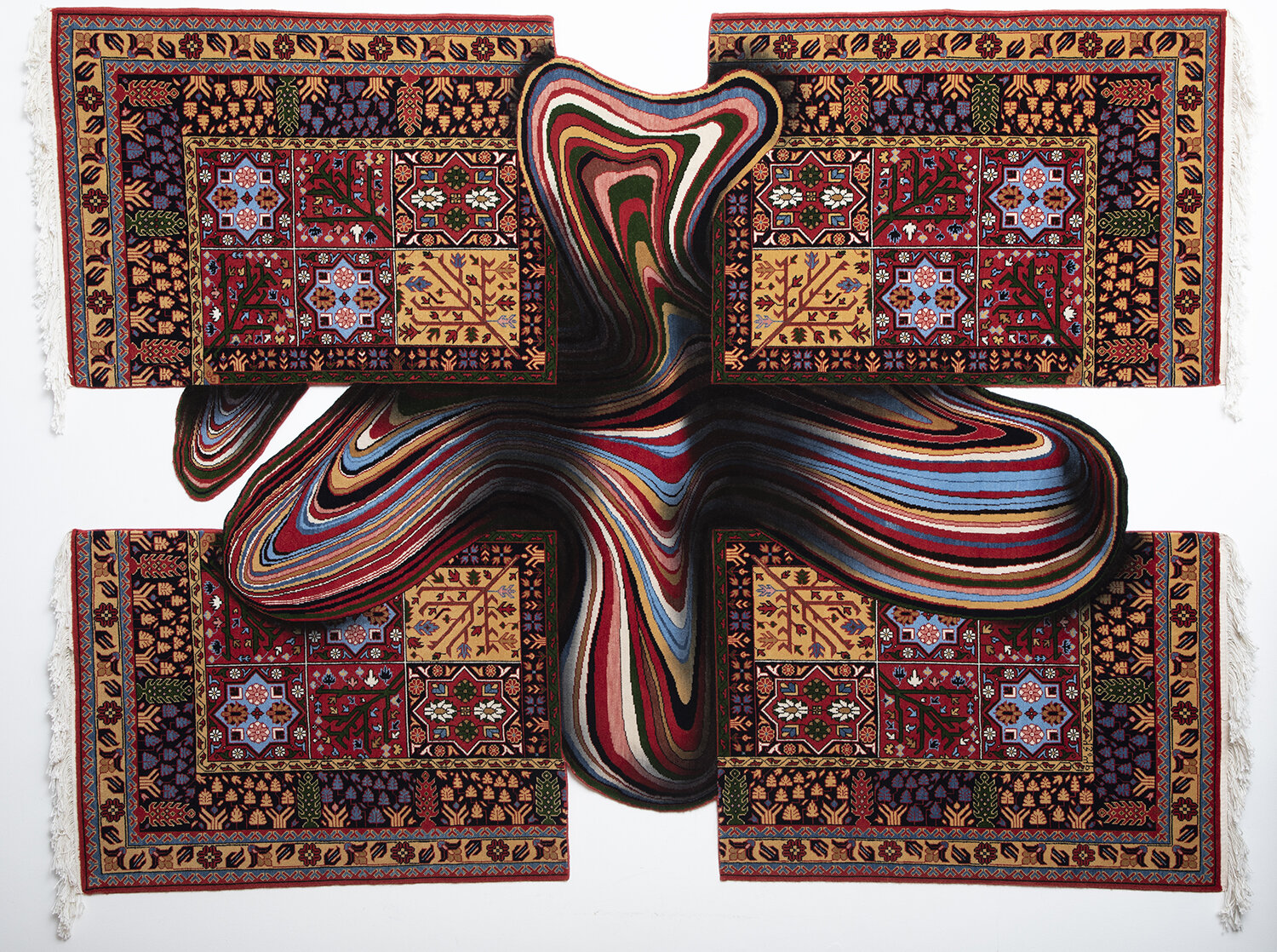


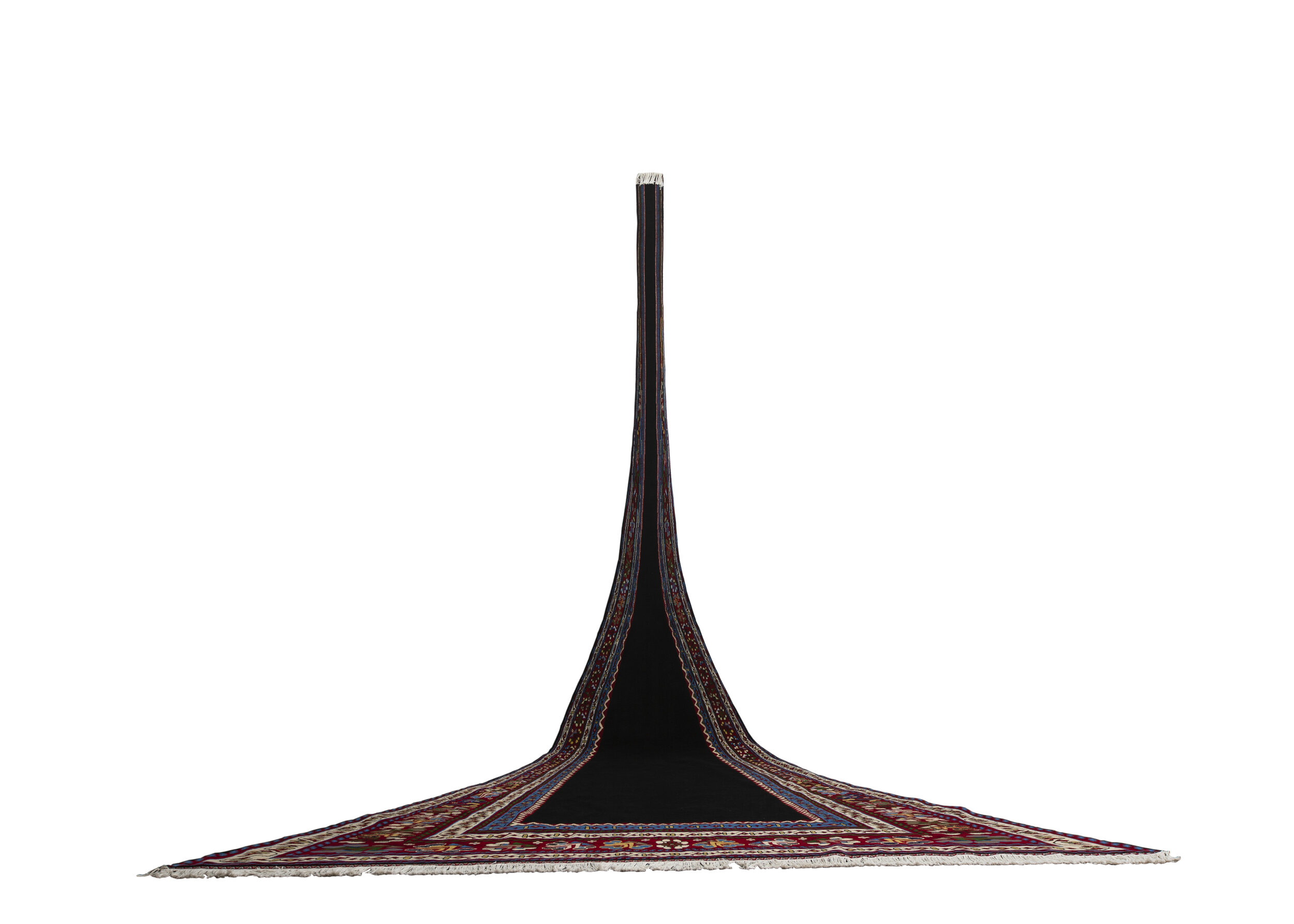

Faig Ahmed
Faig Ahmed (Sumqayit, 1982) is well known for his conceptual textile works that transform traditional decorative craft and the visual language of carpets into contemporary sculptural works of art. In addition to carpets for which the artist is best known, Ahmed works in a broad range of mediums embroidery, video, sculpture, large scale outdoor installations, performance and works on paper. His art reimagines ancient crafts and creates new visual boundaries by deconstructing traditions and stereotypes. Ahmed is among the new wave of contemporary artists exploring crafts in innovative ways to produce conceptual works that break away from conventions by bringing it into a global contemporary art context. Ahmed explores fresh new visual forms that examine tradition and challenge our perception of traditions through iconic cultural objects. The artist explains that he is interested in engaging with the past or historical traditions because “it is the most stable conception of our lives.” The artist’s deep interests and avenues of personal inquiry are connected to world religions, mystical practices, ancient scripture, calligraphy and patterns. In the introduction to his first major European solo show, “Points of Perception” at Museo d’Arte Contemporanea di Roma, the curator for the exhibition, Claudio Libero Pisano states that the artist “deals with the question concerning the perception of truth” and creation of.” He describes Ahmed’s aesthetic as “daring and futuristic,” and yet "faithful to ancient methods.”
Ahmed lives and works in Baku, Azerbaijan. He graduated from the sculpture department of Azerbaijan State Academy of Fine Art in 2004. He represented Azerbaijan at the nation’s inaugural pavilion at the Venice Biennale in 2007 and participated in the show “Love Me, Love Me Not” in 2013 at the Azerbaijan’s Pavilion. Among his historical inspirations Ahmed lists Hieronymus Bosch and Otto Dix, among his contemporaries he admires the works of James Turrell and Anish Kapoor.
EXHIBITIONS
Ahmed has exhibited his works worldwide including group and solo exhibitions in New York, Paris, London, Berlin, Rome, Venice, Dubai, Washington D.C., Hong Kong, Mumbai, Moscow, Azerbaijan, Sweden, Norway, Honolulu, Melbourne, and Sydney. In the past few years, Ahmed’s works have been exhibited in several museums including the Museum of Fine Art Boston, Los Angeles County Museum, Bellevue Art Museum, Milwaukee Institute of Art & Design, MOCA Cleveland, Museum of Old and New Art, Tasmania, Pennsylvania College of Art and Design, Shangri La Museum of Islamic Art, NYU Abu Dhabi, the Textile Museum of Sweden, the Projective Eye Gallery at UNC Charlotte, and many others. The artist was nominated for the Jameel Prize 3 at the Victoria and Albert Museum in London. Ahmed’s upcoming museum exhibitions include shows at The Aga Khan Museum, the New Tretyakov Gallery, and in Istanbul Modern.
COLLECTIONS
Ahmed’s works can be seen in public collections globally, including the Art Institute of Chicago, Los Angeles County Museum, Palm Springs Art Museum, Seattle Art Museum, RISD Museum of Art, Chrysler Museum of Art, George Washington University, Brooks Museum of Art, Memphis, TN; Currier Museum of Art, NH; Bargoin Museum, France; MOCAK Museum of Contemporary Art, Krakow, Poland; The National Gallery of Victoria, Australia; Arsenal art Contemporain Montréal, Canada; The National Museum of Art, Architecture and Design, Norway, Istanbul Modern, Museum of Fine Arts, Houston.
His work has also been placed in private and institutional collections such as the West Collection, Philadelphia; the Microsoft Art Collection, Wake Forest University, the collection of Beth Rudin DeWoody, New York; Galila’ Collection, Brussels; Ranza collection, Rome; Jameel Foundation, Espacio SOLO, Puerta de Alcalá, Madrid; London and H.H. Sheikh Zayed bin Sultan bin Khalifa Al Nahyan, UAE.

